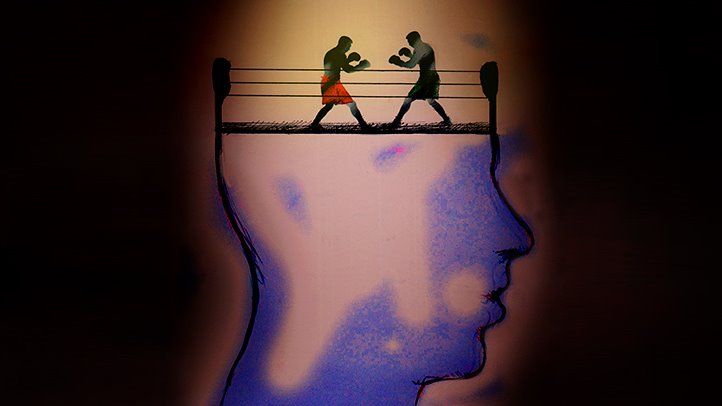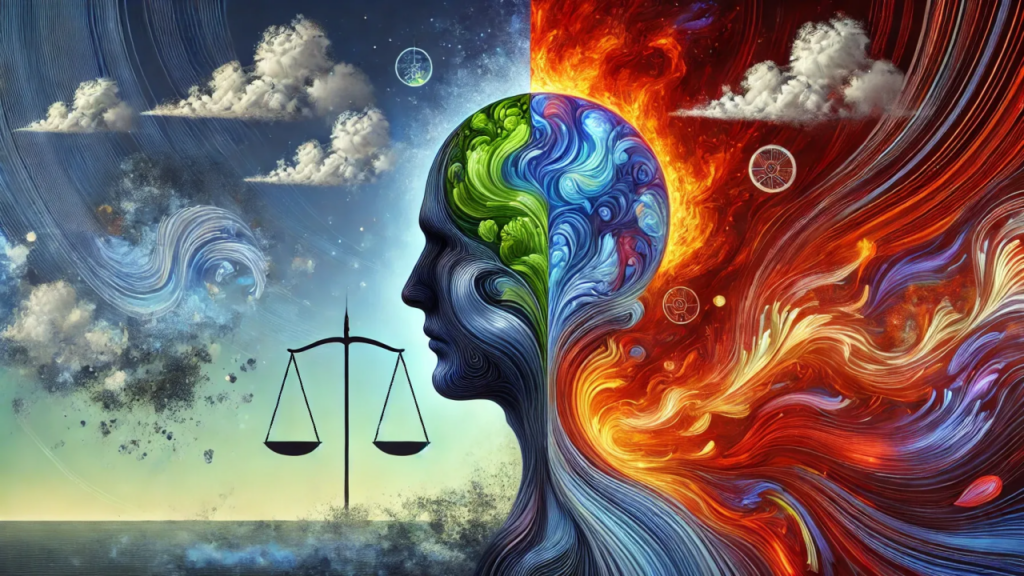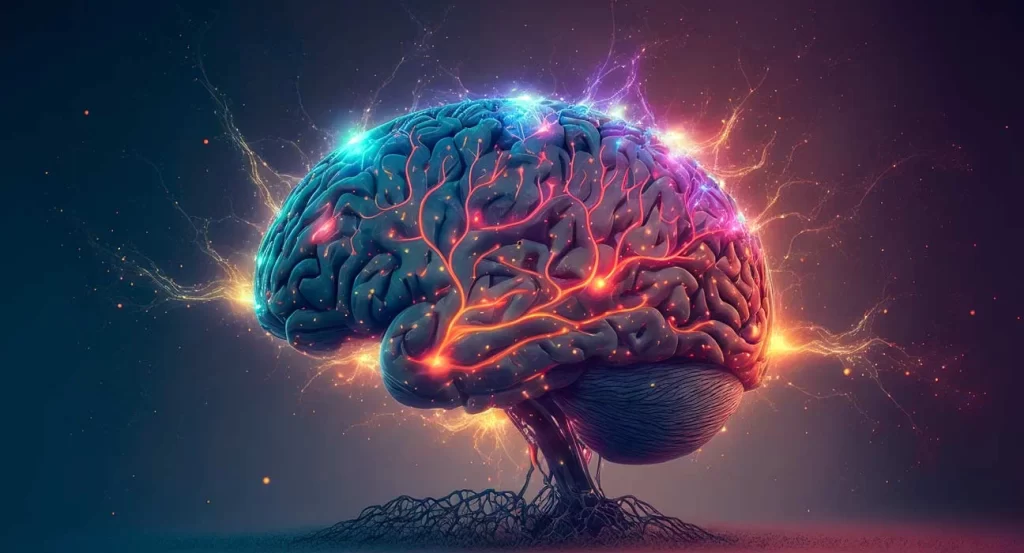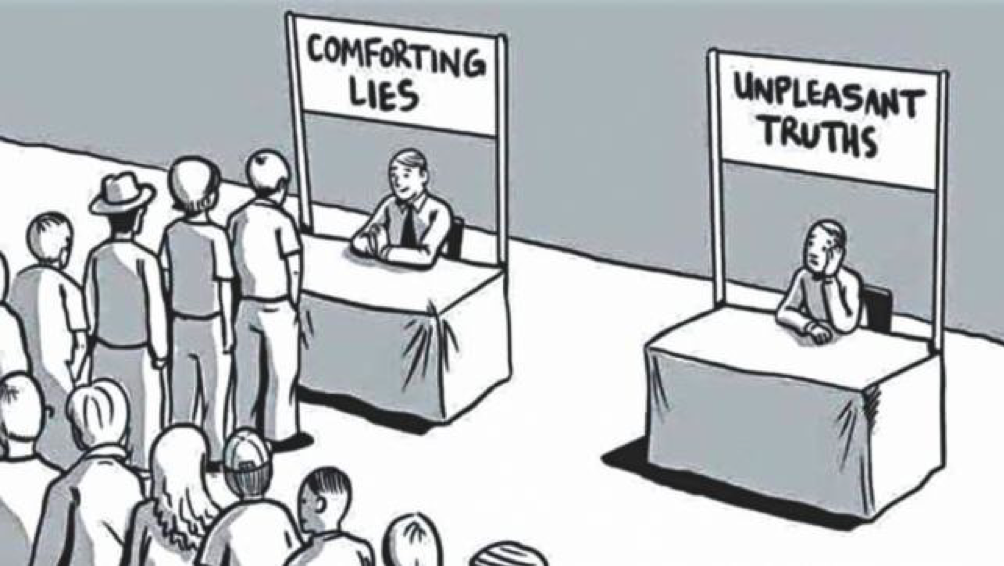Table of Contents
The Psychological Strain of Contradictory Beliefs
The cognitive dissonance occurs when an individual experiences mental discomfort due to holding conflicting beliefs, values, or attitudes simultaneously. This psychological tension can push people to seek resolution in different ways, such as altering one of the contradicting beliefs, justifying their stance through selective reasoning, or outright rejecting conflicting evidence. The concept, first introduced by Leon Festinger in 1957, revolutionized the understanding of human thought processes, highlighting how people strive for internal consistency. This phenomenon is closely tied to self-justification, as individuals often resist admitting they were wrong. Instead, they engage in confirmation bias, surrounding themselves with agreeable information rather than facing opposing viewpoints.
This mental conflict can manifest in various behaviors, often influencing decision-making and emotional stability. When confronted with new evidence that challenges their deeply held beliefs, individuals experiencing the cognitive dissonance may react defensively, rationalizing contradictions rather than reassessing their perspectives. This is particularly evident in political or social debates, where people defend their viewpoints despite contradicting facts. For example, a person who values honesty but engages in deceit may justify their actions by downplaying their impact or blaming external factors. The discomfort created by these inconsistencies can lead to stress, frustration, or even anxiety, reinforcing the need to resolve the contradiction by shifting perceptions or modifying attitudes.
The Struggle to Maintain Belief Systems
Leon Festinger’s research revealed that when people are confronted with contradictions to their deeply held beliefs, they often seek ways to justify rather than abandon them. His most well-known study examined a doomsday cult whose leader claimed the world would end on a specific date. When the prophecy failed, rather than admitting their belief was wrong, members convinced themselves that their faith had prevented the disaster. This response demonstrated the cognitive dissonance at work, as individuals sought to reduce psychological discomfort by reshaping reality to fit their expectations. Festinger’s work provided groundbreaking insight into how people maintain belief systems, even when confronted with undeniable evidence to the contrary.
The implications of Festinger’s research extend far beyond religious cults, shaping our understanding of human behavior in everyday life. His theory has been widely applied in psychology, marketing, and politics, demonstrating how individuals rationalize conflicting information to maintain internal consistency. For example, in politics, supporters of a candidate may excuse unethical behavior by framing it as necessary for the greater good, despite prior disapproval of similar actions. This illustrates the cognitive dissonance people experience when they must reconcile contradictions within their belief systems. Festinger’s findings underscore the human tendency to prioritize psychological comfort over objective truth, influencing decision-making across various social and personal contexts.
Internal Conflicts and the Battle for Rational Choices
When individuals make choices that clash with their personal beliefs, they often experience an internal struggle to justify their decisions. This can be seen in financial purchases, where people may feel uneasy about spending large sums on luxury items. To resolve this discomfort, they might convince themselves that the higher price guarantees better quality, even when objective comparisons suggest otherwise. The cognitive dissonance in such scenarios leads consumers to seek validation, sometimes relying on advertising or peer influence to reinforce their decision. Similarly, someone who cheats on a diet may justify their actions by claiming that occasional indulgence is necessary for balance, thereby alleviating guilt and maintaining a sense of self-control.
Beyond financial decisions, this psychological conflict affects moral and ethical choices. When faced with actions that contradict their values, people often adjust their reasoning to maintain consistency. For example, an employee who witnesses unethical behavior at work but fails to report it might rationalize their inaction by believing that speaking up would not change anything. This is the cognitive dissonance at work, allowing individuals to protect their self-image while avoiding the discomfort of acknowledging hypocrisy. Over time, repeated justifications can reinforce behaviors, making it harder to confront the contradictions that originally triggered the internal conflict.
Why Changing Political Views Feels Impossible
Political affiliations often become deeply ingrained in a person’s identity, making it difficult to accept contradictory information. When a political party takes an unexpected stance, supporters may feel compelled to justify it rather than question their loyalty. This occurs because challenging their party’s position would create internal discomfort, forcing them to either change their beliefs or admit an inconsistency. To avoid this conflict, people often reinterpret information to align with their preexisting views. The cognitive dissonance in politics is particularly evident during scandals, where loyal voters may downplay, ignore, or shift blame rather than acknowledge wrongdoing by a politician they previously supported. This protective mechanism helps maintain ideological consistency.
The refusal to reconsider political views is further reinforced by selective exposure to information. Many individuals consume news from sources that align with their beliefs, avoiding perspectives that might challenge them. The cognitive dissonance arises when new evidence contradicts their stance, yet instead of reevaluating their position, they often dismiss the source as unreliable or biased. This phenomenon fuels political polarization, making productive discourse difficult. Over time, repeated justifications can solidify extreme views, leading to increased division within societies. The need to protect personal identity often outweighs the pursuit of objective truth, keeping individuals locked into rigid ideological positions.

Faith, Contradictions, and the Need for Justification
Faith-based belief systems often require individuals to accept principles that cannot be easily verified, making justification a key tool for maintaining religious conviction. When religious teachings conflict with personal experiences or modern societal values, followers may reinterpret scriptures or rely on metaphorical explanations to maintain harmony in their beliefs. This process allows individuals to avoid discomfort while preserving their faith. The cognitive dissonance emerges when individuals are faced with contradictions, such as religious texts advocating compassion while also containing strict or punitive teachings. To resolve this, believers may focus on selective interpretations, emphasizing passages that align with their moral values while overlooking those that create internal tension.
This psychological conflict also plays a major role in religious conversion and deconversion. When individuals encounter evidence that contradicts their religious beliefs, they often react in two ways: reinforcing their faith through stronger commitment or abandoning it entirely. The cognitive dissonance drives this decision, as the discomfort of questioning deeply held convictions can be overwhelming. Some may turn to apologetics or theological debates to justify their beliefs, while others may distance themselves from religious institutions altogether. This explains why crises of faith can be emotionally intense, requiring individuals to either restructure their worldview or find new justifications to maintain belief consistency.
Justifying Harmful Behaviors to Ease Inner Conflict
Individuals struggling with addiction often face an internal contradiction between their actions and their awareness of the negative consequences. To lessen this discomfort, they create justifications that allow them to continue their behavior while preserving their self-image. The cognitive dissonance manifests when an addict acknowledges the harm caused by substance abuse yet convinces themselves that quitting is unnecessary or beyond their control. For instance, a heavy drinker may insist that alcohol helps them relax and function socially, minimizing its destructive impact. These rationalizations serve as defense mechanisms, enabling individuals to delay change while maintaining the illusion that they are still in control of their choices.
Overcoming addiction requires breaking these justifications and confronting reality. Many treatment programs focus on helping individuals recognize and challenge the cognitive dissonance that fuels their substance use. A critical step in recovery is shifting from denial to acceptance, acknowledging both the harm and the necessity for change. Cognitive-behavioral therapy often addresses these mental contradictions by helping addicts reframe their thoughts and develop healthier coping mechanisms. However, the discomfort of abandoning old justifications can be overwhelming, leading many to relapse. The stronger the rationalizations, the harder it becomes to break free, making addiction one of the most challenging disorders to overcome.
Rationalizing Unhealthy Relationship Dynamics
When personal values and relationship realities conflict, individuals often create justifications to ease emotional discomfort. The cognitive dissonance emerges when someone feels hurt by a partner’s neglect but convinces themselves that the behavior is excusable or temporary. This mental contradiction allows them to avoid facing painful truths about the relationship. For example, a person in a one-sided friendship may excuse their friend’s repeated absence by attributing it to a busy schedule rather than acknowledging a lack of effort. These rationalizations help preserve emotional security in the short term but often prevent individuals from making necessary changes to improve their relationships or set healthy boundaries.
This struggle also appears in abusive or toxic relationships, where individuals may feel trapped between their self-worth and their commitment to a partner or friend. The cognitive dissonance becomes a coping mechanism, leading them to minimize mistreatment or blame themselves for the dysfunction. A victim of emotional abuse may justify their partner’s actions by believing that they are overly sensitive or that love requires endurance. The fear of confronting reality can make it difficult to leave, reinforcing patterns of unhealthy attachment. Recognizing and addressing these contradictions is essential for breaking cycles of emotional distress and fostering healthier relationships.

The Hidden Strain of Contradictory Thoughts
When individuals experience ongoing mental conflict between their beliefs and actions, it can create significant emotional distress. The cognitive dissonance arises when a person holds contradictory thoughts but avoids addressing them, leading to chronic stress and self-doubt. For example, someone who prioritizes honesty but frequently lies to maintain social acceptance may experience anxiety from the inconsistency. Over time, this unresolved tension can contribute to emotional exhaustion, irritability, and low self-esteem. Many individuals attempt to suppress these feelings through distractions like excessive work, social media, or substance use, yet avoidance only deepens the underlying psychological strain, making it harder to achieve long-term emotional well-being.
Without intervention, persistent inner conflict can escalate into serious mental health concerns such as depression and anxiety disorders. The cognitive dissonance forces individuals to constantly justify actions that contradict their core values, creating a cycle of self-deception and frustration. Those who struggle to reconcile these inconsistencies may feel trapped, experiencing guilt, indecisiveness, or a sense of losing control over their own lives. Therapists often use cognitive-behavioral techniques to help individuals recognize and resolve these contradictions. By fostering self-awareness and promoting acceptance, mental health professionals assist patients in realigning their beliefs with their actions, ultimately reducing emotional distress and improving overall psychological resilience.
Creating the Illusion of Necessity in Consumer Choices
Marketers strategically use psychological tension to drive purchasing decisions, making consumers feel a gap between what they have and what they should have. The cognitive dissonance arises when an individual perceives that not owning a product means they are missing out on an improved lifestyle, status, or convenience. Advertisements often exploit this by presenting products as solutions to problems the consumer didn’t initially recognize. For example, skincare brands highlight flaws the buyer may not have considered, leading them to feel the need for a product that resolves their newly perceived inadequacy. Limited-time offers and exclusive deals further intensify this pressure, pushing consumers toward impulsive purchases.
Once a purchase is made, companies take steps to minimize buyer’s remorse and reinforce the decision. The cognitive dissonance can emerge if a consumer questions whether they truly needed the product or if it was worth the price. To counteract this, businesses use strategies like follow-up emails, customer testimonials, and satisfaction guarantees to reassure buyers that they made the right choice. Subscription services also capitalize on this by offering “free trials” that hook consumers into long-term commitments. Recognizing these tactics can help individuals make more informed, logical purchases rather than being driven by emotional or psychological persuasion.
Why Some People Struggle More with Contradictions
Certain personality types are more susceptible to internal conflict when faced with contradictory information. Highly ideological individuals—whether political, religious, or philosophical—tend to anchor their identity in a fixed belief system. When confronted with evidence that challenges their views, they experience the cognitive dissonance, leading them to either modify their stance or, more commonly, reinforce it through selective reasoning. For example, a political extremist may dismiss factual contradictions as biased misinformation rather than reconsider their position. This rigidity makes them prone to rationalizing inconsistencies rather than adapting, as acknowledging error would threaten their self-concept and social belonging within their ideological group.
Perfectionists experience a different kind of cognitive conflict, often battling unrealistic expectations. They set high personal standards but inevitably face situations where perfection is unattainable, leading to feelings of failure and frustration. The cognitive dissonance appears when they cannot reconcile their self-imposed ideals with real-world imperfections. Instead of adjusting their expectations, they may engage in self-criticism or avoidance, fearing that any effort falling short of perfection is not worth pursuing. This mental struggle can result in procrastination, burnout, or chronic dissatisfaction, making it difficult for them to accept mistakes as part of growth rather than as personal shortcomings.

Breaking Free from Mental Conflicts
Managing internal contradictions begins with recognizing when beliefs and actions are misaligned. The cognitive dissonance often triggers an instinct to justify inconsistencies rather than address them. However, individuals can train themselves to pause and evaluate their reasoning instead of reacting defensively. Acknowledging discomfort without rushing to resolve it allows for deeper reflection and a more balanced assessment of conflicting ideas. Practicing intellectual humility—admitting that one’s views may need adjustment—can reduce resistance to change. Exposure to diverse perspectives also helps challenge biases, making it easier to consider alternative viewpoints without feeling personally threatened, ultimately leading to more rational decision-making and personal growth.
Beyond self-awareness, structured approaches like therapy and reflection exercises can help individuals confront ingrained contradictions. The cognitive dissonance is often strongest in areas tied to identity, such as political beliefs, relationships, or career choices. Engaging in journaling, mindfulness, or cognitive-behavioral techniques can provide a clearer understanding of why certain beliefs persist despite opposing evidence. Therapists often encourage clients to explore their reasoning patterns, helping them reframe conflicts in a way that reduces psychological discomfort. By shifting focus from self-justification to honest evaluation, individuals can navigate dissonance more effectively, leading to greater emotional resilience and a more flexible, adaptive mindset.
Exploring New Frontiers in Mental Conflict
With rapid technological advancements, the cognitive dissonance is evolving in ways researchers are only beginning to understand. Social media platforms and AI-driven algorithms personalize content, reinforcing biases and limiting exposure to opposing viewpoints. This creates digital echo chambers, where individuals receive only information that aligns with their beliefs, intensifying their resistance to change. Additionally, the rise of deepfake technology and misinformation makes it harder to distinguish fact from fiction, increasing the psychological discomfort when conflicting narratives emerge. As technology continues to blur the line between reality and manipulation, future research will likely explore how people process contradictory information in online spaces and whether digital literacy can help reduce dissonance.
Another area of interest is how cognitive dissonance affects decision-making in an era of rapid information overload. With an endless stream of news, opinions, and data, individuals are constantly faced with choices that may conflict with their preexisting beliefs. Researchers may investigate how people navigate these contradictions and whether AI-driven interventions can help them make more rational decisions. Additionally, studies may focus on how exposure to diverse viewpoints—whether through virtual reality, gamified education, or AI-generated debate simulations—can encourage intellectual flexibility. As cognitive dissonance research expands, its insights could lead to new strategies for reducing polarization and fostering more open-minded discussions in an increasingly digital world.
How useful was this post?
Click on a star to rate it!
Average rating / 5. Vote count:
No votes so far! Be the first to rate this post.
Author
-

Meet Dr. Kendall Gregory, a highly accomplished professional with a remarkable academic background and a deep passion for empowering individuals through knowledge. Dr. Gregory’s educational journey began with a Bachelor of Science degree, followed by a Doctor of Chiropractic Medicine, focusing on diagnosing and treating musculoskeletal conditions. He further expanded his expertise with a Master's degree in Oriental Medicine, specializing in acupuncture and Chinese herbology, and a Master's degree in Health Care Administration, emphasizing his dedication to improving healthcare systems. Dr. Gregory combines his extensive knowledge and practical experience to provide comprehensive and integrative healthcare solutions. Through his writings, he aims to inspire individuals to take charge of their health and make informed decisions.
View all posts






